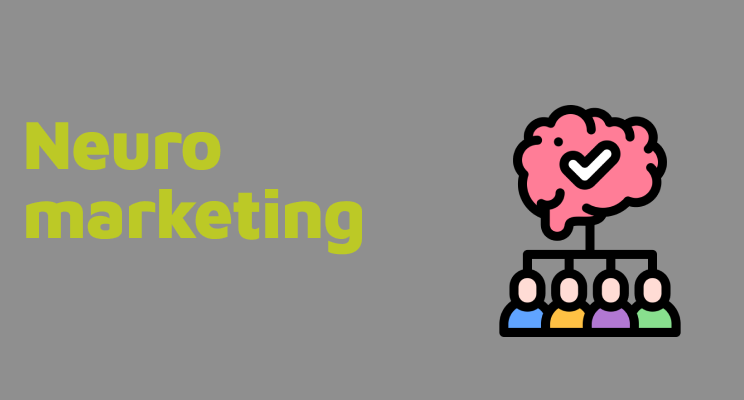The way we think and do marketing has changed a lot over the last decades, as we have already mentioned in other articles. With the technological development that has occurred since the beginning of the century, one of the key points of marketing became the analysis of the consumer’s buying behavior, to understand what their needs are and how to satisfy them. Thus, a new area of marketing was born – neuromarketing.
In today’s article we will explain to you what neuromarketing is and how it can be applied to business.
What is Neuromarketing?
Neuromarketing is the application of neuroscience and cognitive science to Marketing, whose objective is to understand how people relate to a brand and what their desires, motivations and interests are to make a purchase. According to a Harvard University study, 95% of purchasing decisions are made irrationally.
Reliving our school days, namely our science classes, we know that the human brain is composed of three parts: neocortex, our rational component; limbic brain, our emotional component; and the reptilian brain, our innate component, in which we do things automatically and without thinking, such as breathing, feeling hungry/thirsty, surviving, etc.
Although marketing actions impact all parts of our brain, it is only the reptilian part that generates a reaction, in the case of advertising a product/service, a purchase. Any Marketing strategy must be understood by the rational component, to generate an emotion and a basic impulse, which is not identified as such, but which will be the great motivator of the purchase.
Types of Neuromarketing
Neuromarketing is characterized by the human sense that impacts a person. In this sense, there are five most common types of Neuromarketing, namely:
• Auditory Neuromarketing: when using auditory neuromarketing the goal is for audience to focus their attention on something they are hearing, considering that the brain usually associates sounds with positive or negative experience, and can be used in marketing for attraction.
• Neuromarketing visual: this is the most recurrent and strongest impact in marketing and advertising, since we put a lot of trust in what we see. Here everything that captures our eye is used: colors, images, videos, shapes, etc.
• Kinesthetic neuromarketing: this type of neuromarketing uses senses such as touch, smell, and taste. Not every brand can use it, but it is a strategy that we see much more frequently.
• Emotional neuromarketing: this is the most comprehensive because it seeks to generate a multi-impact experience. Besides reaching the impulse part, it seeks to appeal to emotions to justify a behavior.
• Story Neuromarketing: is more targeted since it has a defined strategy that seeks to reach people through storytelling with different formats and channels, so that it is perceived by all our senses.
Advantages of Neuromarketing
Neuromarketing has several advantages for marketing strategy, including:
• Having a greater understanding of our audience.
• Analyze customers in a non-intrusive way.
• Improve the customer experience.
• Having more robust and precise strategies
• Have a better attraction and conversion of leads
• Improve the positive image of brands
Using neuromarketing it is possible to measure and evaluate each stimulus and its impact on a person. This way, all your efforts to communicate, sell and advertise will be easier, obtaining better results.
3 Neuromarketing strategies to apply to your business
There are several neuromarketing strategies, however, today we will highlight just 3:
• Educate the audience: before asking, it is better to give. This is the lesson given by Inbound marketing, which focuses on creating valuable content, offering solutions, following the target audience, and educating them to talk about their needs and how to solve them, and then about a product/service. When someone treats us well, offers us valuable information, we feel empathy, affinity, and even the commitment to do something for the brand that is offering us their time, resources, and knowledge.
• Storytelling: Knowledge, learning, and perception of the world have always been made through stories. This is the essence of storytelling – telling the story of a business/brand in all its communication efforts. This sparks the imagination, being assimilated into all parts of the brain, driving action.
• Building identity and belonging: the human brain, since forever, has evolved in a society, being part of humanity’s DNA. Thus, having an identity and possessing a sense of belonging is essential. In this sense, promoting a community around your brand that identifies with it and with what you do, creating a sense of belonging, your results will be significantly surprising.
